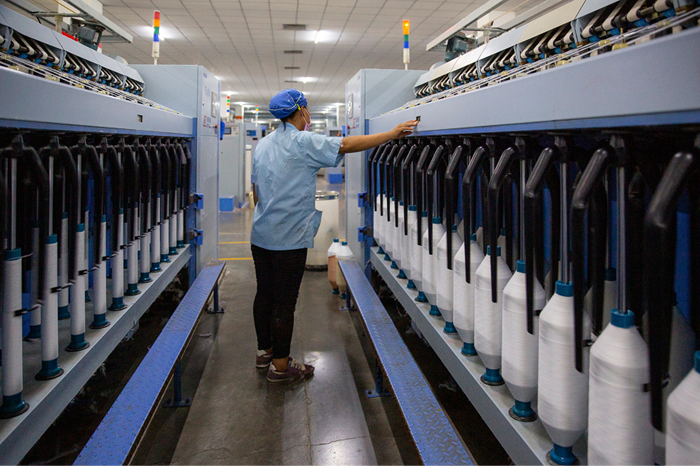Orders for garment exports are shifting from China to the Philippines. But the garment manufacturing industry in the Philippines doesn’t have enough good factories to meet the demand. There are compliance issues. These include compliance of labor, child labor, good working condition, including waste management.
There are few compliant garment firms. These are 15 to 20 big garment manufacturers with a production capacity of 1000 pieces a day. The Philippines has lost its position as the world’s top garment supplier. China, Bangladesh, Africa and sub-Saharan countries have all overtaken the Philippines.
The country lost 70 per cent of its market over 15 years due to a number of reasons, primarily the removal of the quota system that led buyers to source from other countries offering the same products at half the price.
The Philippines now ranks fifth among Asean countries in garment exports. The country has also lost its efficiency and factories have become outdated especially with the advent of robotics, digital cutting and sewing. The industry needs power and labor subsidies. Reduced incentives to exporters have led some companies to freeze their expansion.
The US accounts for 60 per cent of the Philippines’ garment exports. The rest are sold to the EU and Asian countries.
Philippines unable to handle growing garment orders
- 1
- 2
- 3
- 4
- 5
- 6
- 7
- 8
- 9
- 10
Threads of Labor and Steel: The human-machine ecosystem powering India’s textile…
India generates nearly eight million tonnes of textile waste every year, placing the country at the center of the global... Read more
Hanging by a Thread: US Tariffs cripple Indian textile exports, orders drop 70%
India’s textile and apparel industry is facing an unexpected mid-cycle rupture that is reshaping the sector’s economics far faster than... Read more
Sourcing's new compass, navigating apparel's great migration beyond Asia
The global apparel sourcing business is redefining the metrics of success beyond traditional labor costs. Led by geopolitical risks, consumer... Read more
No A-Grades for Climate: What the fossil-free fashion scorecard reveals about in…
For years, the global fashion industry has promised a cleaner, greener future but 2025’s Fossil-Free Fashion Scorecard by STAND.earth offers... Read more
Wired Threads: How India’s textile backbone is powering the smart apparel future
India’s huge textile industry, long celebrated for its command over cotton and competitive manufacturing scale, is going through a foundational... Read more
The New Core Competency: How sustainability and advanced fabrics are driving Ind…
The SportTech Pavilion at Techtextil India, hosted by Concepts N Strategies, concluded with a unanimous declaration: for India to successfully... Read more
New EU import rules set to raise prices for Shein and Temu, boosting European re…
Europe’s fashion and textile scenario is on the verge of its most consequential structural shift in over a decade. The... Read more
Global apparel trade rebalances in 2025 as Europe rises, Asia stumbles: Wazir Ad…
As the global apparel economy enters the final quarter of 2025, trade flows across major markets reveal a sector facing... Read more
Tariffs, turbulence and tenacity, India’s textile sector finds new strength
India’s textile and apparel export sector is showing a remarkable capacity to adapt and thrive in one of the most... Read more
Future Fiber Demand and the Chemical Recycling Imperative: Global industry eyes …
The global textile industry is entering a period of exponential growth and profound technological transformation, according to key figures speaking... Read more












